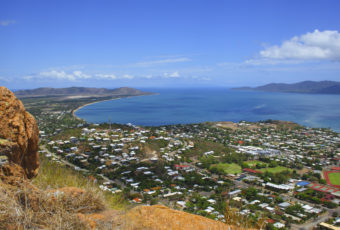The search for Australia’s saddest beach
A unique nationwide competition was launched on March 21 to identify Australia’s saddest beach.
The beach found to be in the worst condition will win a visit from a team of coastal experts who will help the local community transform it into a Happy Beach.

The driving force behind the Happy Beaches competition is Griffith University student Naomi Edwards. A Gold Coast local, Naomi holds a Bachelor of Environmental Science and a Master of International and Community Development.
More recently her research has turned to beach happiness through an Honours project that investigates the use and value of community knowledge in coastal management.
“Happy Beaches is about connecting experts from a range of coastal environmental disciplines with communities who need help managing beach issues,” Naomi said.
“By providing communities with the information they need, we will hopefully inspire and enable them to transform their beach from sad to happy. And at one location, we will come and help them do the job.”
What makes a beach sad?
- Marine debris issues
- Eroded beaches as a result from human impact or unsustainable coastal intervention
- Undesignated beach access
- No long-term beach management strategy
- Lack of community action and partnerships
- Capacity issues (e.g., people/access capacity)
- Lack of facilities to meet beach users’ demands
- Lack of biodiversity and conservation practices
What makes a beach happy?
- Marine debris strategy in action with source reduction results
- A long term strategy that have a vision beyond 25+ years
- Designated beach access and used correctly
- Increasing community action and growing partnerships
- Limited resource capacity constraints
- Sufficient facilities to meet the needs of beach users
- Biodiversity and conservation is central to the management of the beach
The Griffith School of Environment was thought of as revolutionary; today it is more important than ever. Over that time the environment and sustainable practice has evolved from a fringe issue to a mainstream challenge to government, industry and even individual households. Griffith is helping society to face those challenges.
The university has expanded on their initial programs to offer not only environmental and natural sciences but also urban planning and architecture with a focus on sustainable development. Griffith University‘s undergraduate and postgraduate degree programs include
- Architecture;
- Ecology;
- Environmental sciences;
- Environmental management;
- Marine science; and
- Urban and environmental planning.
The Griffith School of Environment has the largest group of environmental professionals in any university in Australia, and among the largest in the world.
Apply to Griffith University School of Environment!
*

































Ask A Question
Ask us about your program of interest, or if you have a question about our services.
CONTACT US TODAY